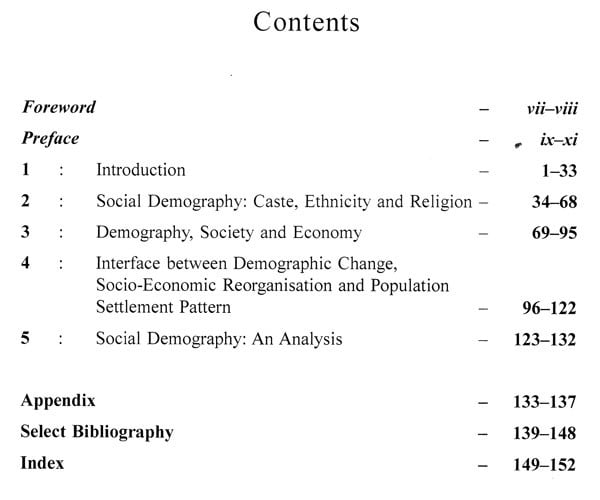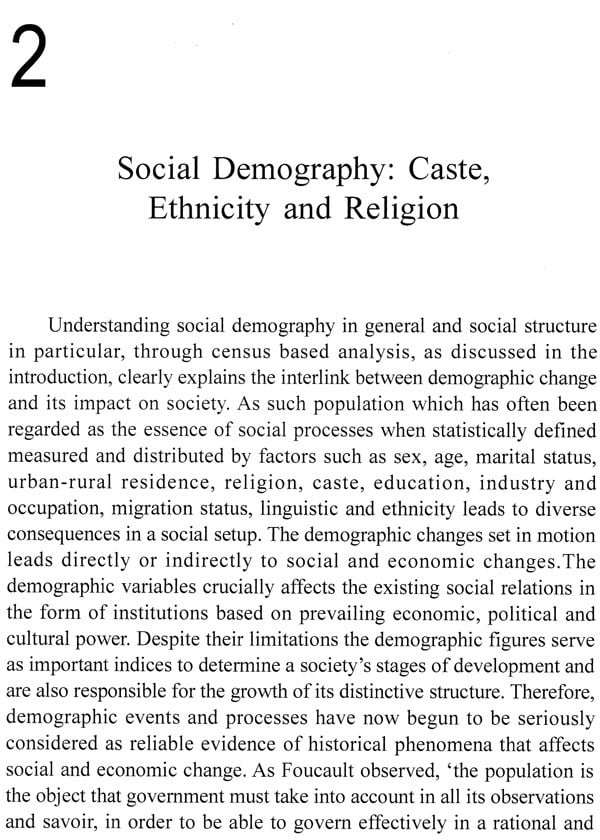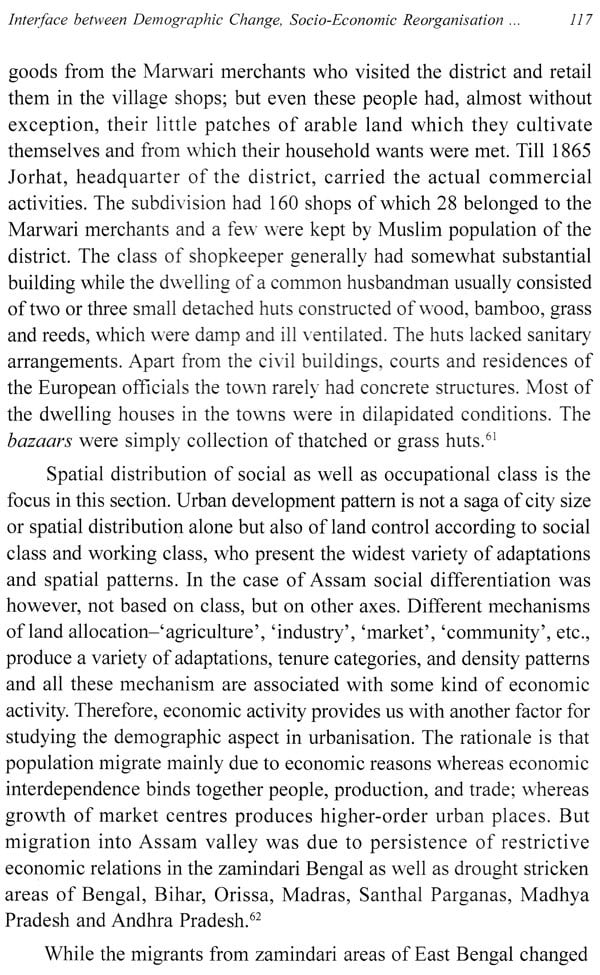
Social Demography of Colonial Assam
Book Specification
| Item Code: | UAW082 |
| Author: | Barnali Kakati |
| Publisher: | EBH Publishers, Guwahati |
| Language: | English |
| Edition: | 2022 |
| ISBN: | 9789390434060 |
| Pages: | 164 |
| Cover: | HARDCOVER |
| Other Details | 9.50 X 6.00 inch |
| Weight | 400 gm |
Book Description
This book takes on important questions on population dynamics in colonial Assam, the internal and external forces of demographic change, in order to review what we think we know about population of the region. The attempt is to see the social relations - across race, caste, occupation, migration and land use. Also the classificatory schemes, rationale and objective of classification of social groups have been analysed.
But how was the population in colonial Assam beheld? Social Demography of Colonial Assam, through historical perspective, exposes what remains hidden in plain sight; the social hierarchies built into the societies and families. The book reveals how these issues were aggravated as colonial notions of caste, gender and migration influenced the then encounters with social space and relations.
Barnali Kakati is an Assistant Professor of History at Kaliabor College, Assam. Her research interests include-demography, migration and local history.
Interesting that Social Demography and demographic patterns in colonial Assam as in other parts of India, is a jigsaw created by the colonizers who deliberately relocated people from other areas and entered them into a stratification system through the census where their roots were totally lost, thereby marking significant shifts in population composition. The author states that despite an increase in migrant labour force transported for extraction of resources primarily for expansion of tea plantation, growth in production and income and change in the pattern of human settlement and land use, the process of urbanization in the Brahmaputra valley of Assam showed a retarded growth; In fact there appeared a reverse trend of 'ruralizing. To explain this historical phenomenon Kakati analyses a symbiotic nexus between non-demographic determinants growing out of social, economic and cultural processes and the population and establishes links with post-colonial demographic trends as a crucial factor in determining the nature of present social and economic structures.
The second chapter: Social Demography: Caste, Ethnicity and Religion relates how colonial strategy manipulated the social quantification and classification with the help of indigenous upper caste employees and Census enumerators impacting an attempt by lower castes and indigenous groups for upward social mobility as a result of which categories were perpetually adjusted, de-adjusted and readjusted' in the census. Notions of religion-based hierarchy, and racial purity led to social and political movements which made serious attempts to improve the status of castes regarded as untouchables to the extent of discarding the age old customs, language and even occupation.
This book which has developed out of my doctoral research work is about historical population, about categories and classifications, and about occupation and land use in the nineteenth and twentieth century Assam. It is also about the continuities and changes, changes due largely to external forces - colonial interaction and immigration.
Towards the middle of the nineteenth century Assam encountered British colonialism politically and various factors sustained colonial rule in this peripheral geography. In due course structural changes were brought in; new relationships emerged, which in turn challenged the colonial administration to explore the complex social structure with inherent tensions, Colonial understandings developed a form of knowledge of its subjects the population of the state beyond a historic or visual order. The definition of the individual singularly and in group became extensive, divided into attributes-physical and cultural, while transitory practices took on shape and strength.
Past population has been in the forefront of both historical investigation and public appropriation ever since the careful treatment given in colonial ethnography, and in the studies onmigration. Since then a number of works have referring to population change and various implication on Assam. That the growth in the labouring population was closely related to the population expansion through migration; that population growth and social change were intimately related in Assam in the nineteenth century has been widely discussed. During the period the growth in the proportion of labouring population combined with the rise in the rate of their demographic growth is supposed to have altered the population composition and raised the size of population radically. The extension of agriculture and tea plantation was in some sense responsible for enclosure and it was in many senses responsible for the decline of pre-colonial socio-economic institutions-but was it equally responsible for the population changes and economic growth in the nineteenth century Assam? We need to understand both the social structure and the growing population of nineteenth century in order to answer this question.
Social Demography of Colonial Assam is a historical perspective to understand the impact of demography on society and economy of colonial Assam. It has been undertaken within the conceptual framework that demographic structures have been the major contributing factor towards 'social formation, economic organisation and in the functioning of government'.' Demography or population behaviour has decided every turnout in history since the time when society in global context, emerged as a historical process when human settled down with agriculture, familial ties developed and society emerged as a historical process. In other words, demographic concerns have always gained importance in understanding the structural change in society and economy.
**Contents and Sample Pages**













